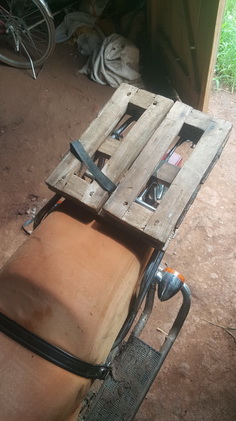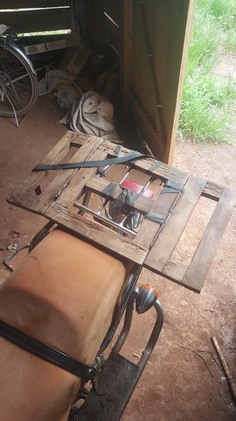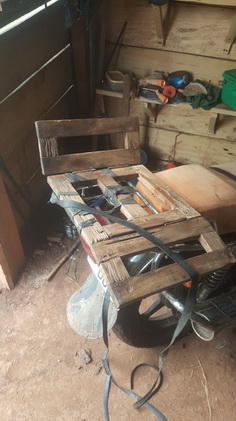We brought the fruit trees back to Chabima and had started the distribution. To see that the apple trees, 20 trees, were missing.
I had called the official in Morogoro who was in charge who assured he had delivered everything. But in fact his confusion came from the fact that he had delivered five mango apples, a variety we had ordered, in believing it was those apple trees. He had a copy of the order voucher with him but with a lot of bad faith he claimed to have forgotten it at home, did not waver from the fact that he had delivered apple mango trees. After four days of talking on the phone he finally admitted being wrong. Apple trees must be ordered from Iringa, in altitude, 300 km from here, and still worth four euros each. That made a loss of almost a hundred euros.
We took the opportunity to make a new order, and on the 18th, on Thursday I went alone to Morogoro, to the nursery of the university.
I also bought strawberry plants, which nobody had watered while we were in the North, and of which remained only a few feet. If the leaves dry out termites eat them and the roots can no longer grow up. I also acquired gooseberries and mint.
The next day I took possession of the plants and went to take the bus. And rather than leave the bag with the seedlings in the corridor I opted to rent a second seat, next to me.
Arrived in Kilosa I took my motorcycle and loaded the plants on the luggage rack. It is a luggage rack that I fitted with a butterfly, i.e. an openwork board that folds or unfolds. This butterfly has no success, as soon as Kimsi or another one take my motorcycle they remove the butterfly. The idea came to me from the bikes and motorcycles in Burkina Faso which almost all have this kind of system. There they fill the undersides of the wings so that when the butterfly is closed it serves as a sit. No success here.



When both edges are raised to vertical position it serves as a cassette, the transported objects cannot then slide on the side, which happens with the bumps of the road.
There were thirteen plants of red apples and seven plants of green apples, also called yellow or white. White apples have been marked on their leaves with permanent marker. But at the time sorting at Kimsi we found that the sheets marked W (white) had fallen for four of them. So we tried to sort by plant morphology, but there may be mistakes. We’ll know in four years.
The plants purchased, in addition to apple trees, are therefore the following:
![]() 12 blood mango trees
12 blood mango trees
![]() 4 orange trees Sweet Matombo
4 orange trees Sweet Matombo
![]() 2 grape-fruit trees
2 grape-fruit trees
![]() 2 tangerine trees
2 tangerine trees
![]() 2 hybrid zambarao
2 hybrid zambarao
![]() 2 pomegranate trees
2 pomegranate trees
![]() 2 mammey fruit trees
2 mammey fruit trees
We had other requests but several people said they didn’t have any money. They will have it at the end of February when they have harvested the beans. The month of February is dry, in general, a kind of dry season. Then the rains resume, less heavy. It is therefore possible to plant in March without having to water.